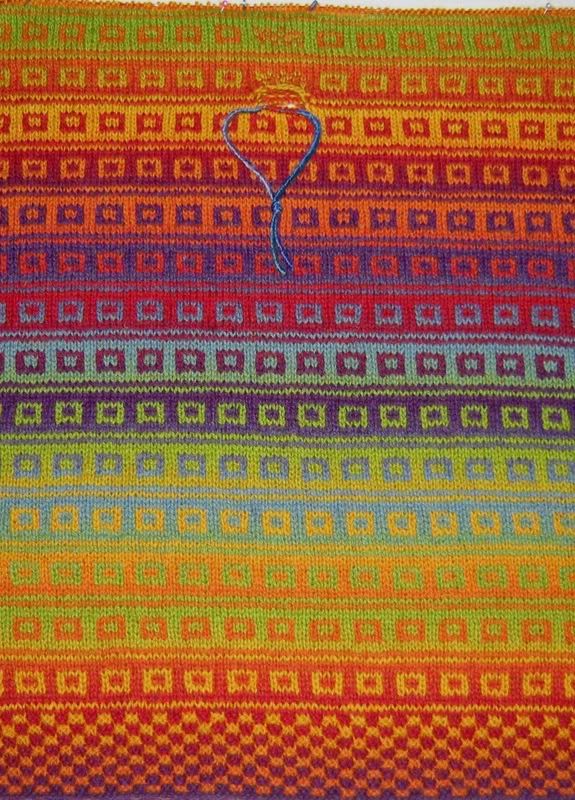My baby blanket, Widdicombe Fair, is finished. Baby X has not yet made his way into the world and so I can now tell my husband “I told you so.” (He was a bit nervous about my finishing this in time.) I have a few in-progress photos to show you before I get briefly into steek finishing. There is no video, alas, because my videographer was on her way to Colorado before I got to that point. (More on that later.)
Here is the blanket as I finished the last row before binding off. I’m including this just to show how it makes a nice little corner even on the needles.

Instead of a regular bind off, I did a two-stitch I-cord bind off. It gives a little more firmness to the edge and makes a nice miniature welt that matches the garter stitch in my opinion. While working on it, I had a bit of help from my assistant. If you look carefully, you can see his favorite toy — a chewed up rattan coaster — tucked up into the knitting in the upper left-hand corner.

Here is a close up of the border with the I-cord bind off.

I know you all want to see how I finished the steek, which is kind of embarrassing actually. I’m not the expert finisher that my sister is. Moreover, I had a lot of trouble taking photographs of what I was doing with one hand while still trying to do something with the other. So please take a moment to lower your expectations and then we may proceed.
First of all, steeks are wonderful things. They do add a tiny bit of bulk or thickness; that’s usually not a problem but just something to keep in mind. I think the yarn from Virtual Yarns is a bit heavier than other fair isle weight yarns, and so there is a bit more thickness to my blanket steeks than there are with some of the fair isle garments I’ve knitted. I try to keep that in mind when I figure out what I’m going to do with the finished product.
There are a lot of different ways to finish steeks. Truth be told, if they are not going to show you probably don’t have to finish them at all. (This only applies, of course, to items knitted out of Shetland wool which sticks to itself.) For example, I never bothered to finish off the armhole steeks to a child’s sweater I knitted at least ten years ago. My son wore it and then my niece. The steeks are still fine. They haven’t unraveled. Nothing was done to these steeks — no hand or machine knitting of any kind.

The traditional way I learned to finish steeks is the cross-stitch method. After you cut the steek, you trim it down to two stitches or so and then trap the raw steek edges with Xs of yarn. I did that when I first started out with fair isle. Here is what it looks like. *Covers eyes in embarrassment.*

Maybe it’s just my crappy technique, but I’ve never thought this method looks all that great. Its advantage is that it is really simple and requires absolutely no machine sewing.
I’ve now switched to doing a crocheted edge along the steek because it makes it flatter (thus reducing that little bit of bulk) and I think it looks more finished.
I know of two ways to do a crocheted edge to finish a steek. One way is to crochet on either side of the center stitch of the steek before you cut it. To be able to do that, the center of the steek has to be stable enough to “hold” the crocheting and therefore it’s recommended that you spit splice your color changes instead of just adding in new yarn. (I think you could do a variation on this in which you do the crocheting close to the edge stitch on each side and then cut but I’ve been afraid to try it.) To me, doing all that spit splicing at the center of your steek sort of ruins the benefit of the steek. As a result, I’ve never tried this method. I suppose it would always work at the armhole steeks of a cardigan because you don’t use those steeks to change color. It would also work if you were only using two colors. (Examples: Jade Starmore’s Persian Tiles or the Kauni Cardigan.) If you are interested in a better explanation of this method, it’s described in great details with lots of photographs on Eunny Jang’s blog here.
The method I use requires a sewing machine. You don’t need to machine stitch the steek to keep it from unraveling — the reason you do it is to stabilize the edge so that you can crochet along it. Here is where the bad photographs start. I don’t do anything to the cut edges of the steek until I have finished the border. As that child’s cardigan demonstrates, those steek stitches are perfectly happy to just sit there. Once the border is finished, I sew a line of stitches between the edge stitch and the cut edge. I use the edge stitch, which has folded in nicely, as a guide for stitching. I try to stitch through the middle of the third stitch from the edge stitch. You could do it closer to the edge, especially if you are a better seamstress than I am. You want to make sure you don’t sew through anything but the steek. Susan could probably give some great tips here; I just muddle through.

Once I stitched the steek, I trimmed it close to the stitch line.

Then I began to crochet along the edge, inserting the crochet hook into the middle of the second stitch from the edge stitch. (That is, I did that except in those places where my sewing line wasn’t as straight as I would have liked.)

A close up of the crocheted edge:

Close up of the crocheted edge of one my sweaters:

For a blanket, it would probably also look nice to knit a facing to cover the steek (although you would have more bulk) or cover the steek with a matching gros grain ribbon. I didn’t do that because I’m lazy. Here is the baby blanket blocking.

For those persistent few still reading, here it is off the blocking wires:

Sadly, my little assistant who so loved this blanket, is gone. He and my daughter left yesterday for Colorado. I cried like a baby when they left.


She’s happy; that’s what counts. (She may not be as happy when she sees I posted her picture.)

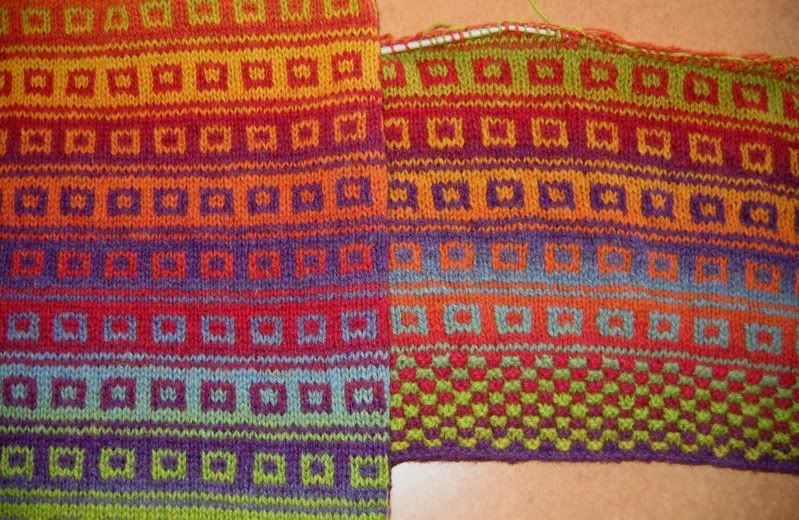

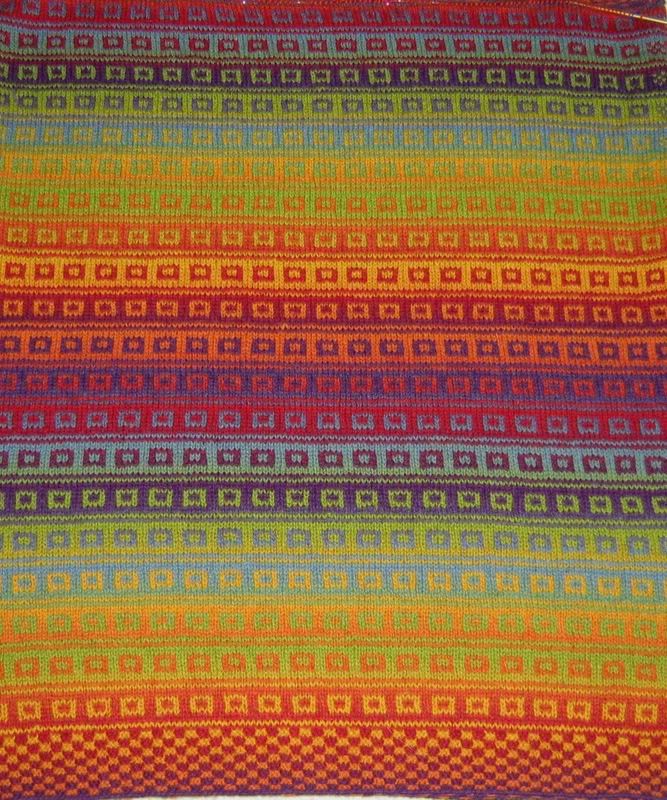





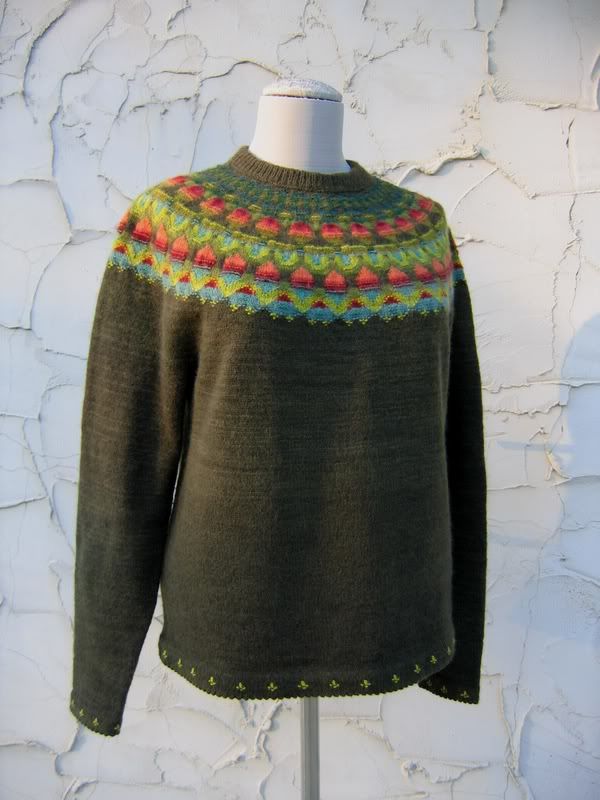
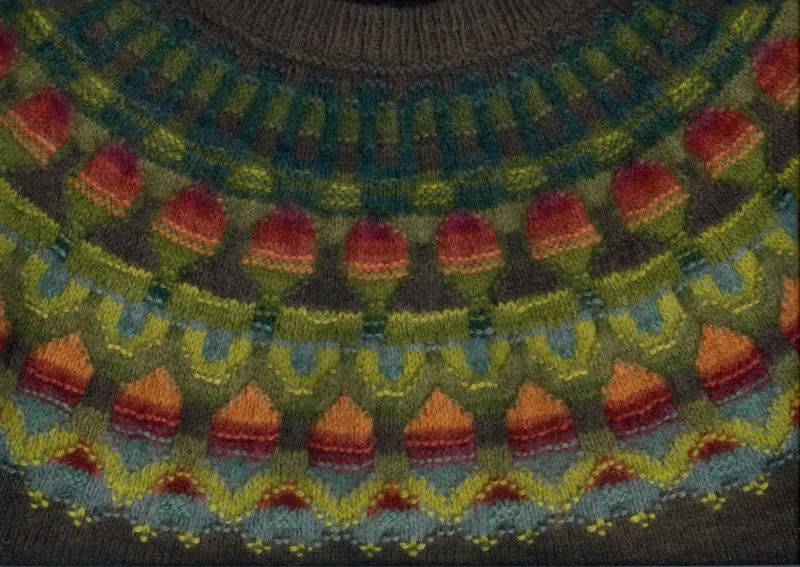
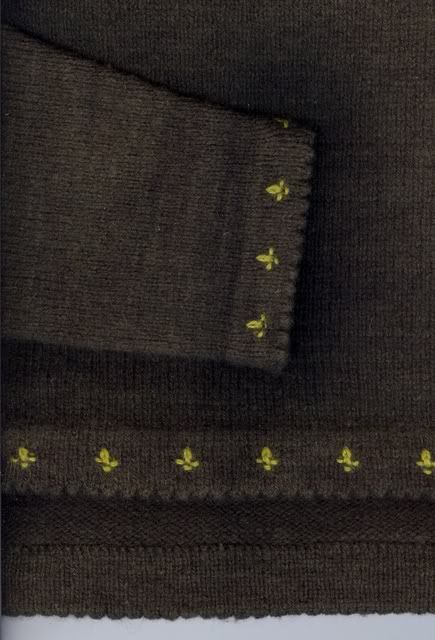
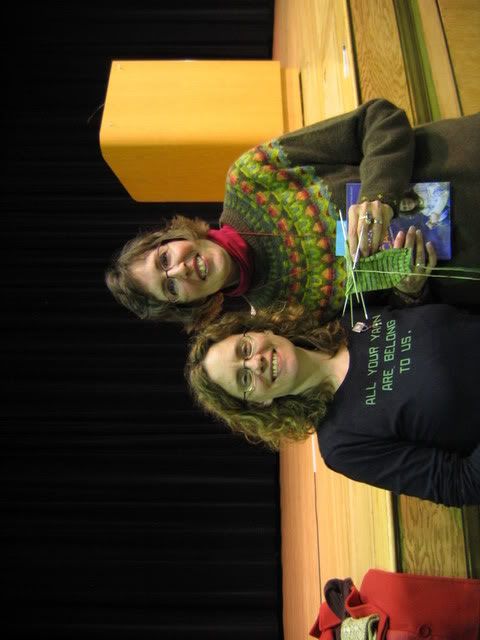
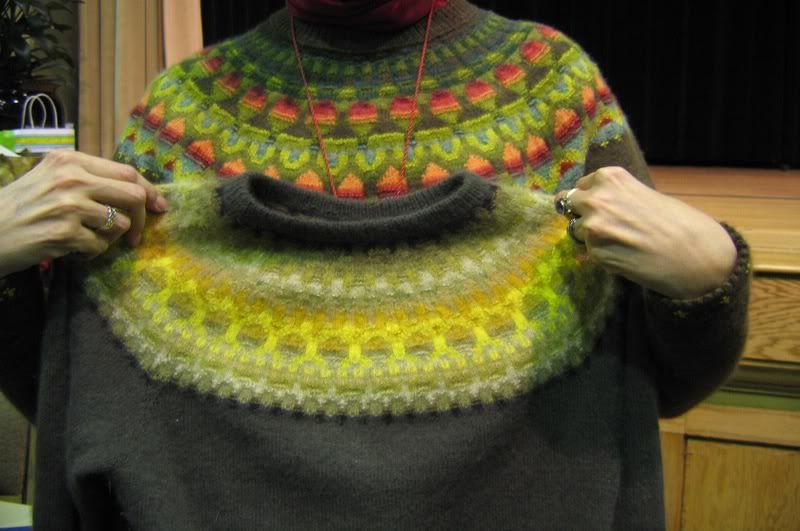
 (I’m the “Big One” of The Rainey Sisters!). The kit I used for my Wild Apples was from
(I’m the “Big One” of The Rainey Sisters!). The kit I used for my Wild Apples was from 